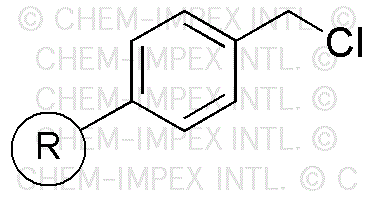Chloromethylated polystyrene is widely utilized in research focused on:
- Polymer Chemistry: This compound serves as a versatile building block for synthesizing various copolymers, enhancing material properties such as strength and flexibility.
- Ion Exchange Resins: It is used to create ion exchange resins, which are crucial in water purification processes, enabling the removal of unwanted ions and improving water quality.
- Drug Delivery Systems: Researchers employ chloromethylated polystyrene in the development of drug delivery systems, allowing for controlled release of medications, which can improve therapeutic outcomes.
- Adhesives and Sealants: This chemical is incorporated into formulations for adhesives and sealants, providing superior bonding strength and resistance to environmental factors.
- Surface Modification: It is applied in surface modification techniques to enhance the adhesion properties of various substrates, benefiting industries like electronics and automotive.
General Information
Properties
Safety and Regulations
Applications
Chloromethylated polystyrene is widely utilized in research focused on:
- Polymer Chemistry: This compound serves as a versatile building block for synthesizing various copolymers, enhancing material properties such as strength and flexibility.
- Ion Exchange Resins: It is used to create ion exchange resins, which are crucial in water purification processes, enabling the removal of unwanted ions and improving water quality.
- Drug Delivery Systems: Researchers employ chloromethylated polystyrene in the development of drug delivery systems, allowing for controlled release of medications, which can improve therapeutic outcomes.
- Adhesives and Sealants: This chemical is incorporated into formulations for adhesives and sealants, providing superior bonding strength and resistance to environmental factors.
- Surface Modification: It is applied in surface modification techniques to enhance the adhesion properties of various substrates, benefiting industries like electronics and automotive.
Documents
Safety Data Sheets (SDS)
The SDS provides comprehensive safety information on handling, storage, and disposal of the product.
Product Specification (PS)
The PS provides a comprehensive breakdown of the product’s properties, including chemical composition, physical state, purity, and storage requirements. It also details acceptable quality ranges and the product's intended applications.
Certificates of Analysis (COA)
Search for Certificates of Analysis (COA) by entering the products Lot Number. Lot and Batch Numbers can be found on a product’s label following the words ‘Lot’ or ‘Batch’.
*Catalog Number
*Lot Number
Certificates Of Origin (COO)
This COO confirms the country where the product was manufactured, and also details the materials and components used in it and whether it is derived from natural, synthetic, or other specific sources. This certificate may be required for customs, trade, and regulatory compliance.
*Catalog Number
*Lot Number
Safety Data Sheets (SDS)
The SDS provides comprehensive safety information on handling, storage, and disposal of the product.
DownloadProduct Specification (PS)
The PS provides a comprehensive breakdown of the product’s properties, including chemical composition, physical state, purity, and storage requirements. It also details acceptable quality ranges and the product's intended applications.
DownloadCertificates of Analysis (COA)
Search for Certificates of Analysis (COA) by entering the products Lot Number. Lot and Batch Numbers can be found on a product’s label following the words ‘Lot’ or ‘Batch’.
*Catalog Number
*Lot Number
Certificates Of Origin (COO)
This COO confirms the country where the product was manufactured, and also details the materials and components used in it and whether it is derived from natural, synthetic, or other specific sources. This certificate may be required for customs, trade, and regulatory compliance.


